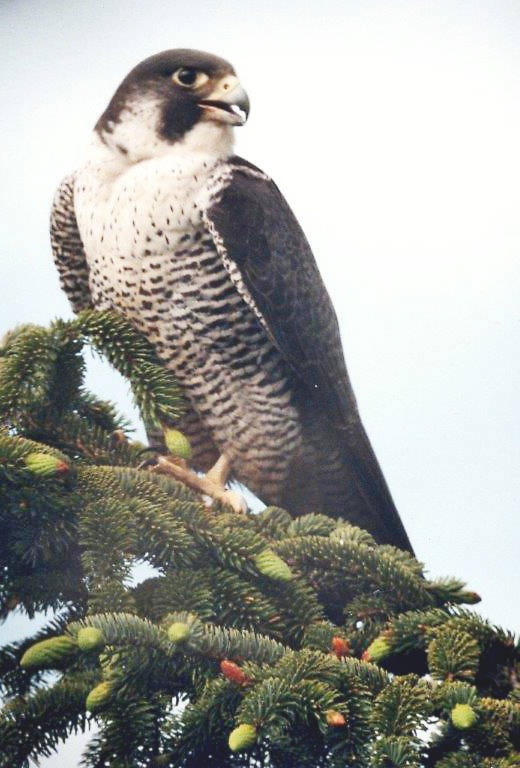By Margo Hearne
The tide is falling and Delkatla is full of ducks. They arrived recently and might just stay around for the winter. It’s their home after all, and they love it there. Ever since tidal waters were restored in 1995, the sanctuary has become a major wintering area for teal, mallard, wigeon and pintail.
A few Gadwall have shown up this fall — they were very much absent last year. We went from a wintering population of around 80 to a low of four. What happened? We don’t know. It was such a long, cold winter that maybe they just kept on going south into the unknown. The smaller teal stayed around: those small, fine ducks with iridescent red and green heads. When they catch a bit of sunlight, their feathers shine. We don’t give the wild world enough credit for their own knowledge of beauty, but why not? They sing, shine and fly while we earthbound creatures stomp over the green as though we own it all.
Peregrine Falcons certainly own the air. Three of them snapped along smartly over the dunes this week. One chased an eagle — that big, burly, feathered flier — then two more came along and they chased each other. The eagle was left in peace to finish whatever it had been feeding on before the falcons arrived. We don’t often see three Peregrines at the same time. They may well be migrating through, or if we are lucky, one will roost in a big tree overhead and stay for the winter.
Gulls have been gathering over the beaches this past while. Many will stay for the season. The sea, that great provider, doesn’t freeze and drops food off daily. It makes perfect sense to hang out and let the ocean do the work. Skonun Point is one of the few places where Western Gulls linger in winter. They are fairly uncommon on island, and, when they park in a flock on the beach, their dark backs contrast with the grey-backed, more common Glaucous-winged and Thayer’s Gulls with which they associate. We have seen up to eight out there in winters past. There are a few Black-legged Kittiwakes showing up in the inlets again. Two years ago there was such a big run of herring they seemed to be the only gull in town. It’s early days yet before we can determine whether or not there will be that many around this year.
So, as someone once wrote, “ever at my back I hear time’s winged chariot changing gear.” We are moving quickly into the long, dark days. The clocks go back an hour this Sunday, Nov. 5, hastening in the long nights. The world’s critters don’t care but follow their own rhythms and will expect to be fed at the same time every day whatever our clocks say.
